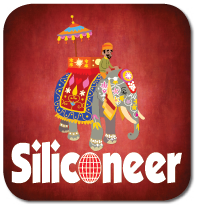EDITORIAL:
The PM, India Never Had
|
The Siliconeer App
 Siliconeer is now available as a native app for iPhone and iPad on Apple’s App Store and on Google Play, the store for apps on Android phones. Siliconeer is now available as a native app for iPhone and iPad on Apple’s App Store and on Google Play, the store for apps on Android phones.
The app features different ways to read Siliconeer, get instant updates and also features interactive tools.
Readers can see the latest updates, read the issue in magazine format, view the deals by our advertisers, view photos and videos of latest community events, get Facebook and Twitter feeds and share photos and thoughts with other readers of Siliconeer through Reader’s Choice.
We encourage you to explore the app on your smartphone. The app is free and available for download now.
Click on the app image to download.
|
A barrister, a statesman, one of the leaders of the Indian National Congress and one of the founding fathers of the Republic of India. Sardar Vallabhbhai Patel was a social leader who played a leading role in the country’s struggle for independence and guided its integration into a united and independent nation.
For many decades after his death, there was a perceived lack of effort from the Government of India, the national media and the Congress party regarding the commemoration of Patel’s life and work. Patel was officially awarded the Bharat Ratna, India’s highest civilian honor, posthumously in 1991.
He was also featured on the cover of Time magazine’s January 1947 edition.
As someone aptly commented, Sardar Vallabhbhai Patel was probably the finest Prime Minister of his time, that India never had.
Siliconeer presents a remembrance of his life and work in this year’s Independence Day Special feature.
The U.S. Secretary of State John Kerry was recently visiting India to better the somewhat tangled relations between the two nations. He met with Prime Minister Modi and other ministers of the Modi government.
During a meeting with India’s External Affairs Minister Sushma Swaraj, India bluntly told the U.S. that surveillance of political leaders and others in India by the American intelligence was “unacceptable” to which the U.S. responded by saying that any differences that may exist can be resolved by intelligence communities of the two countries. We present a PTI report of Kerry’s recent visit to India.
As a tribute to this phenomenon of bling are the scores of television-serials that showcase glammed-up dolls and molls, albeit a tad bit garish, in endless yarns adorned with infinite number of bright sequins, as also the opposite gender dressed in sharply stitched glazed suits.
The bling is not new to the Indian fashion construct and since ancient and medieval times diamonds, precious stones, pearls, and woven and knotted threads of gold, silver and copper were used to add to the ornate richness of motifs in diverse styles.
Such intricate craftsmanship involved creative pairing of the glitter with embroidery on heirlooms, and thus these fabric works came to be equated with art and luxury in India, Europe and Arabia, all of which accounted for the high value Indian exports.
Bling, ubiquitous to India’s design heritage, and probably drawn from the harsh and hot immediate environs, has forever helped Indians unabashedly sparkle their way in life, writes Priyanka Bhardwaj.
Siliconeer wishes all readers a very happy Independence Day. Jai Hind!
|